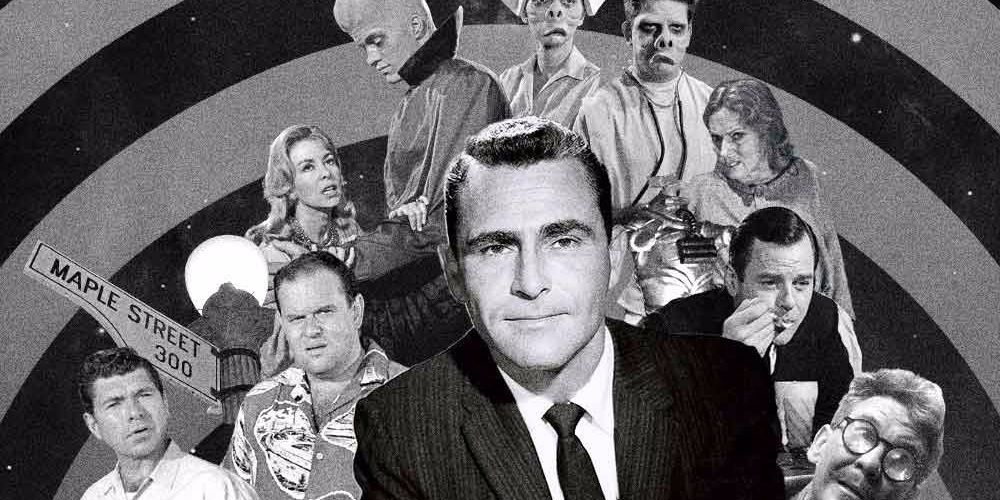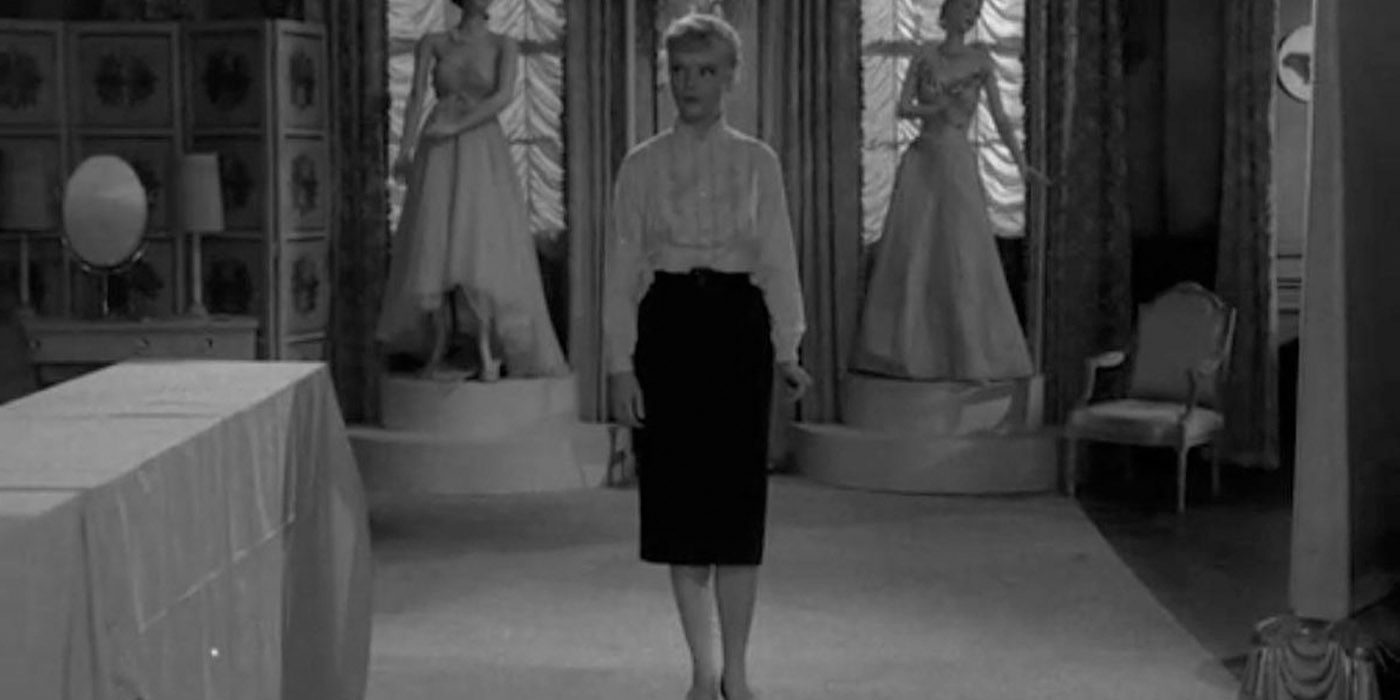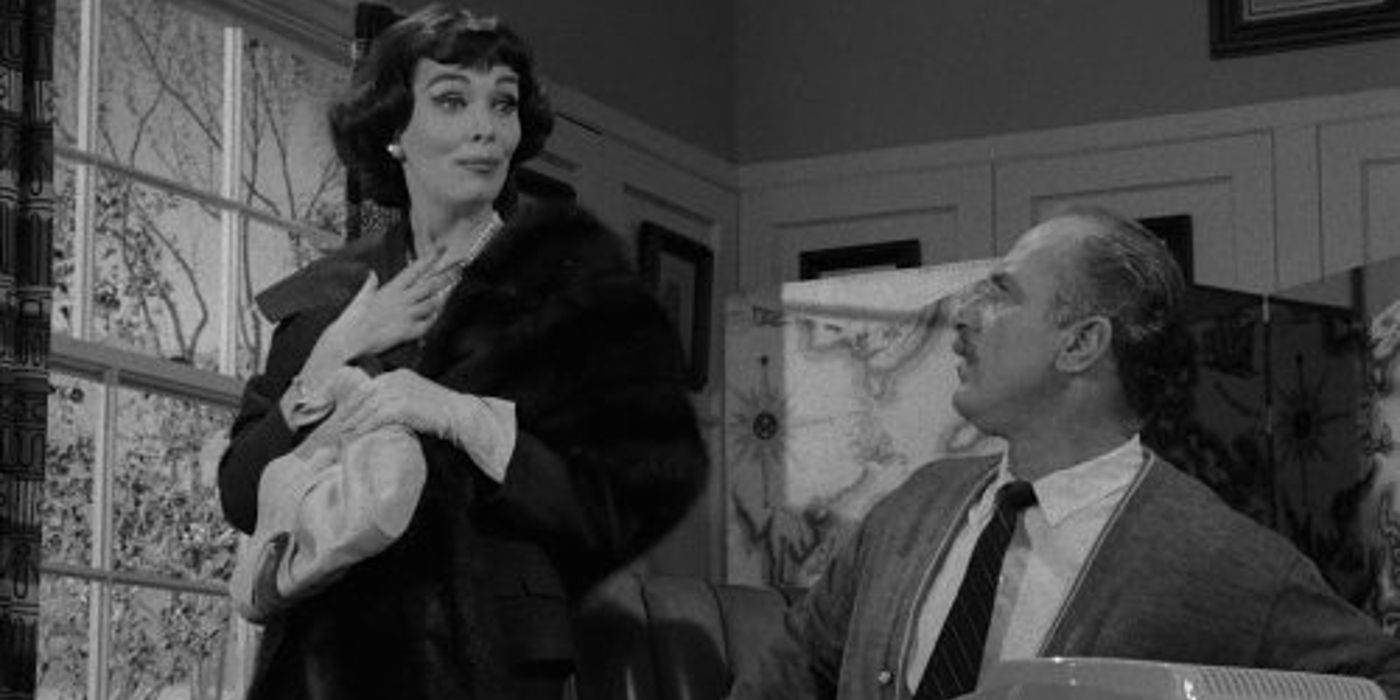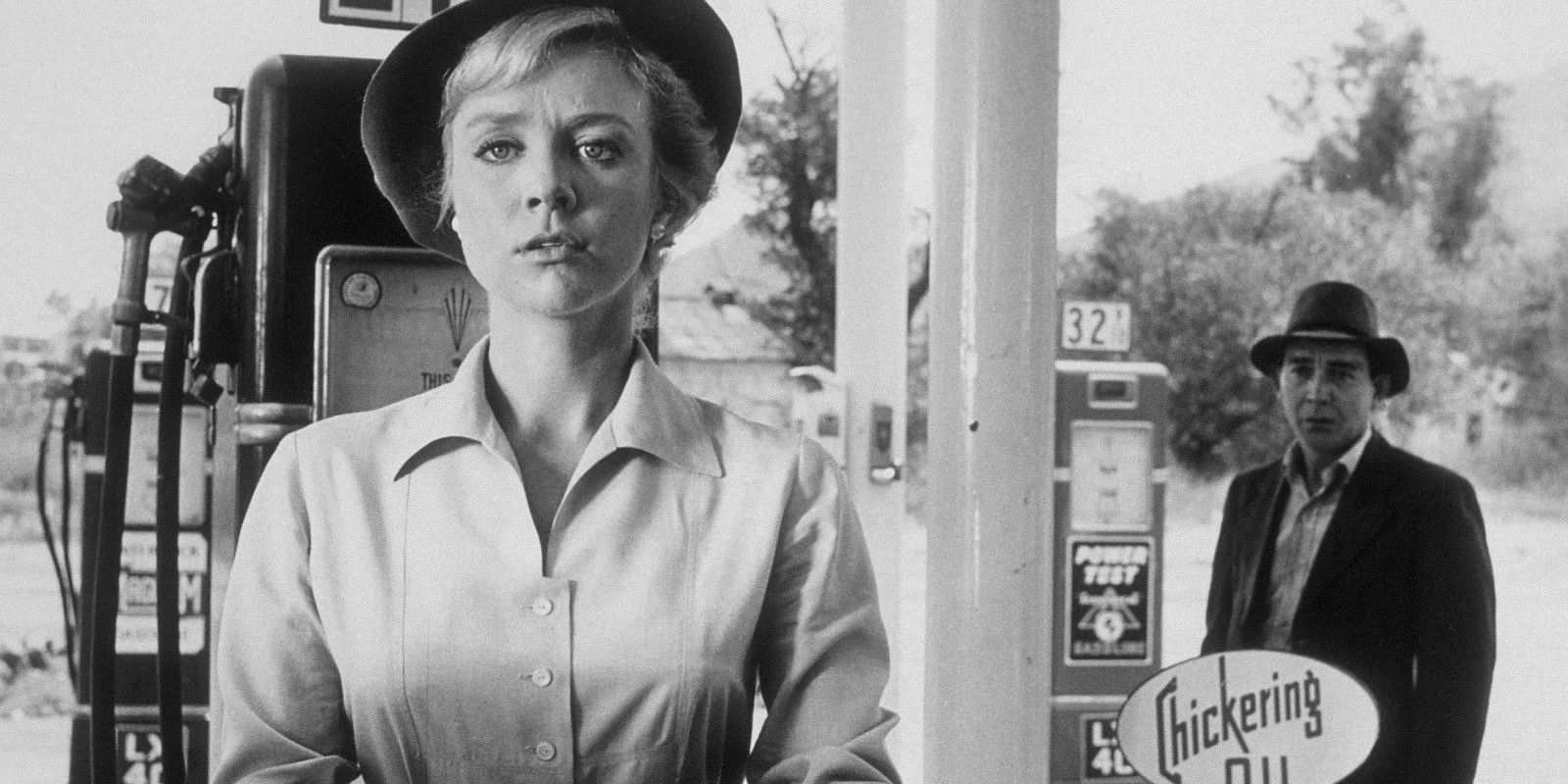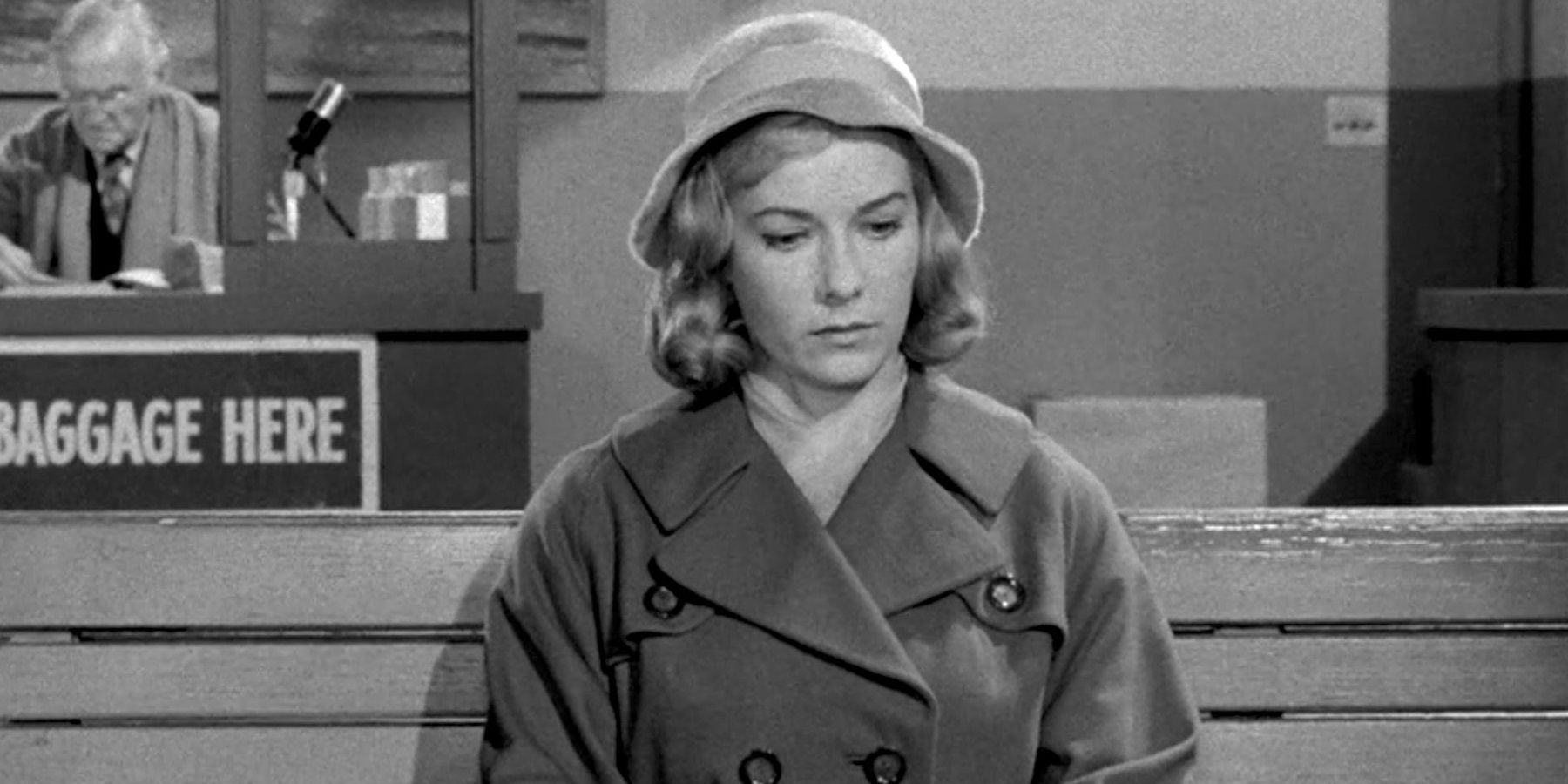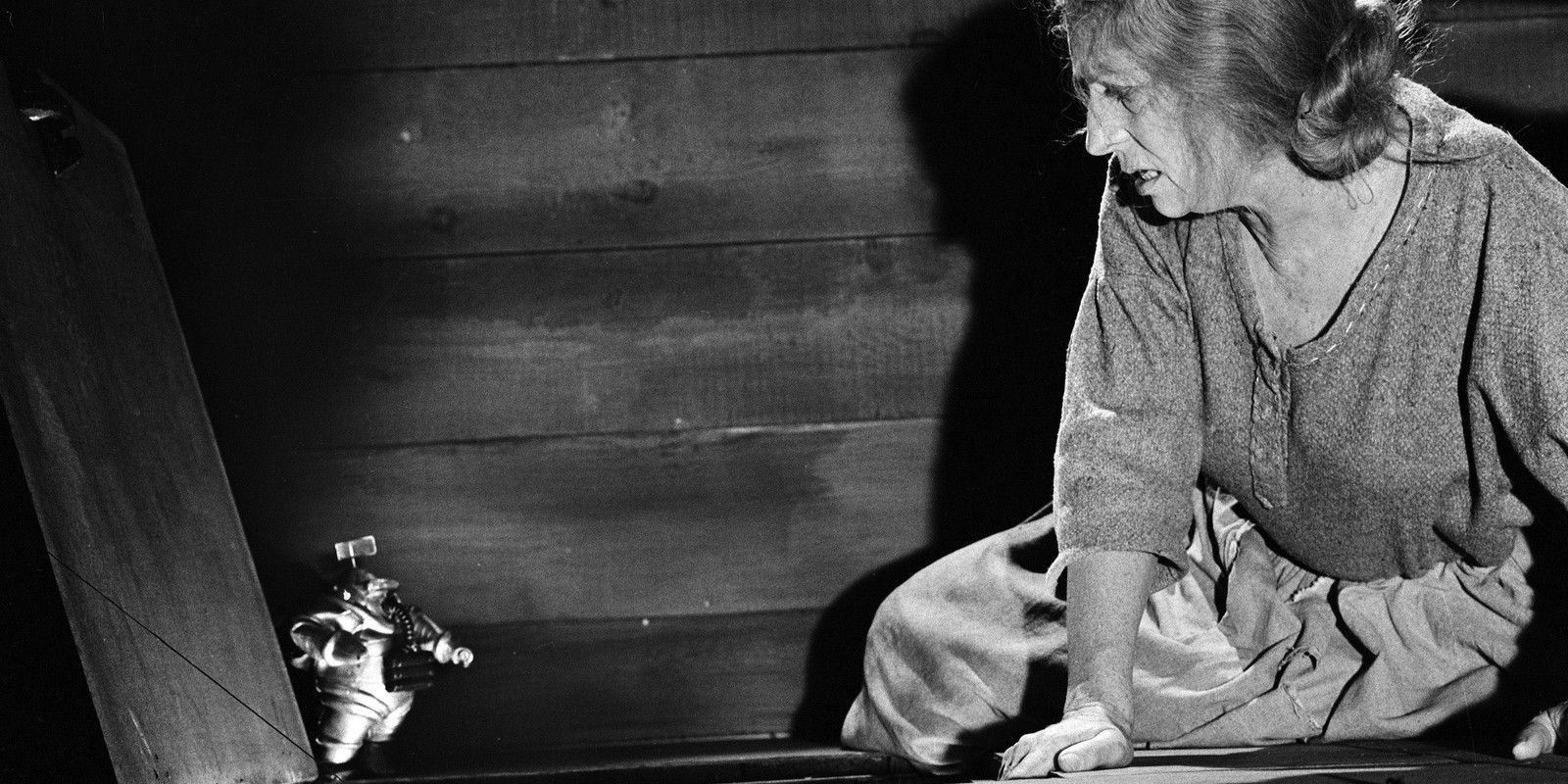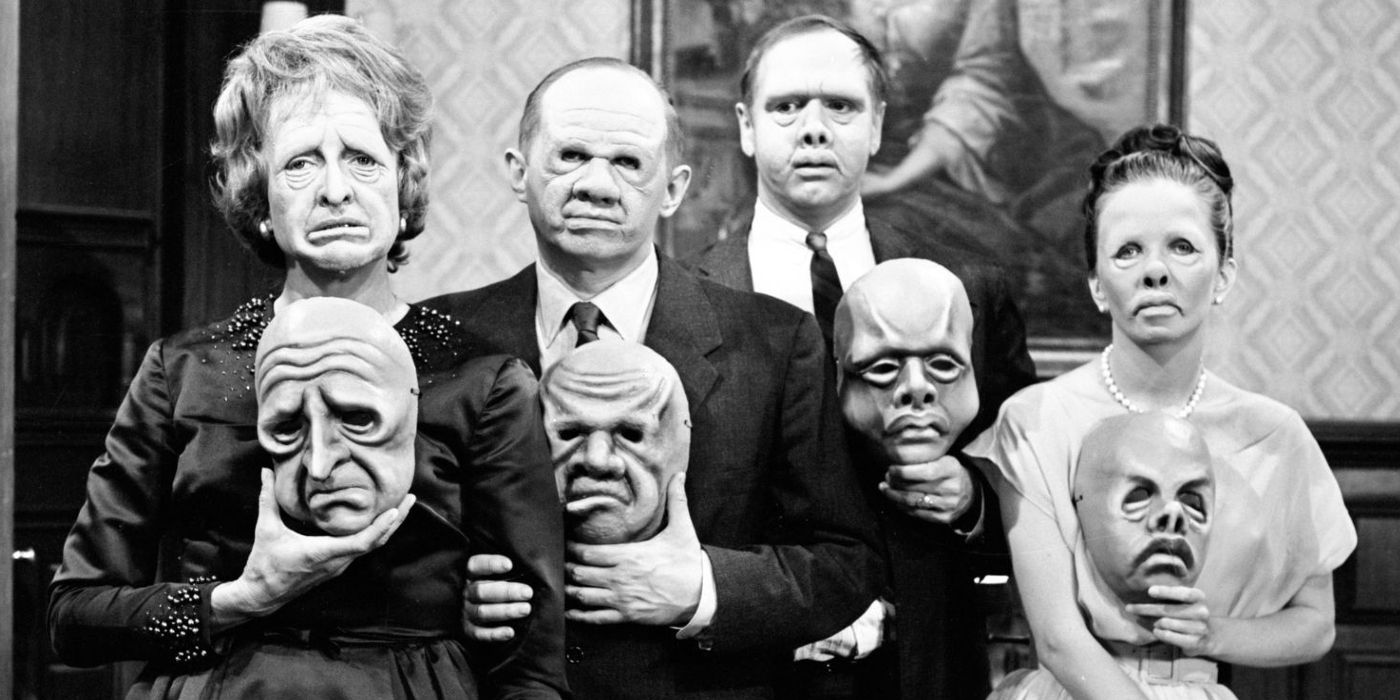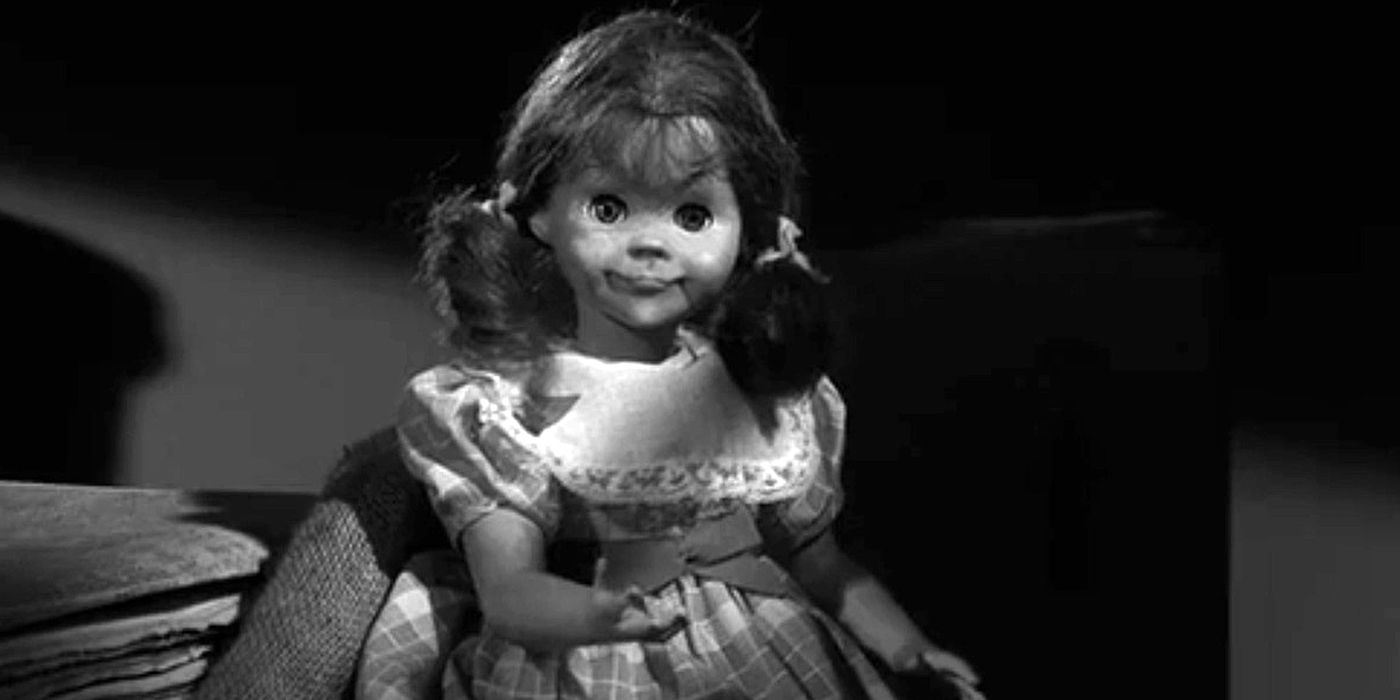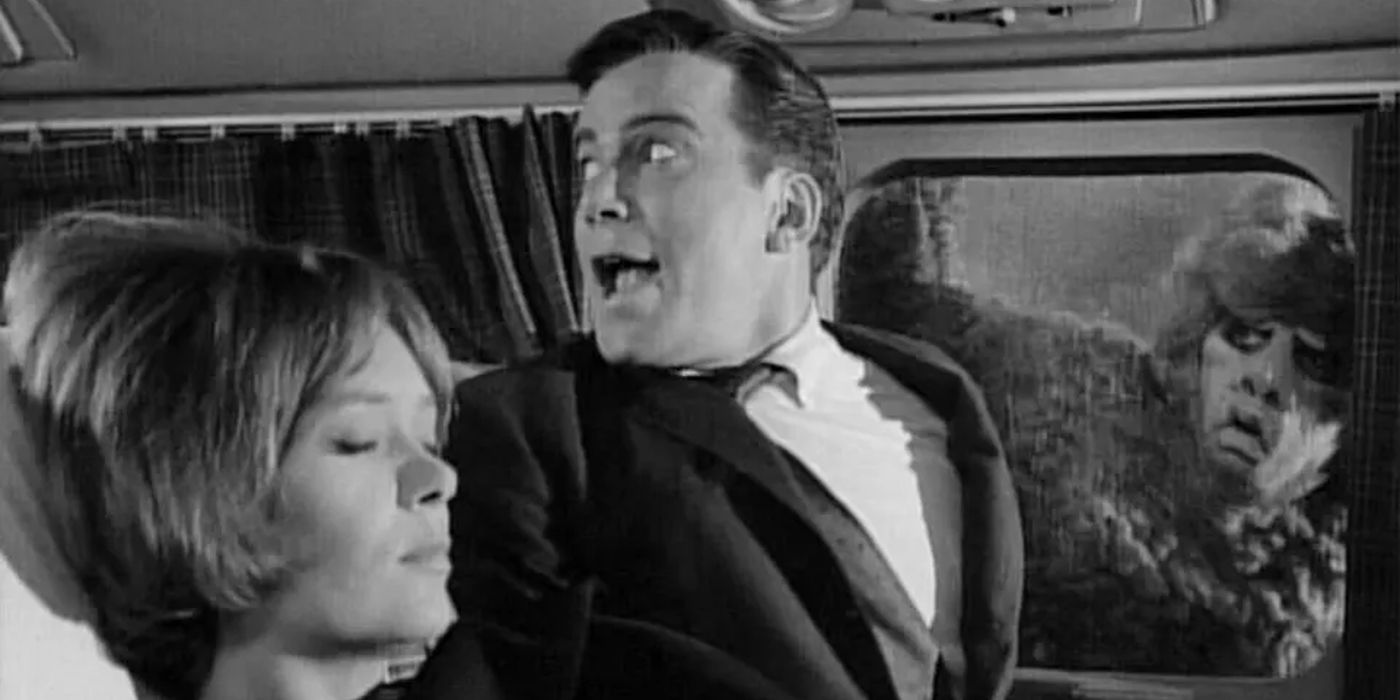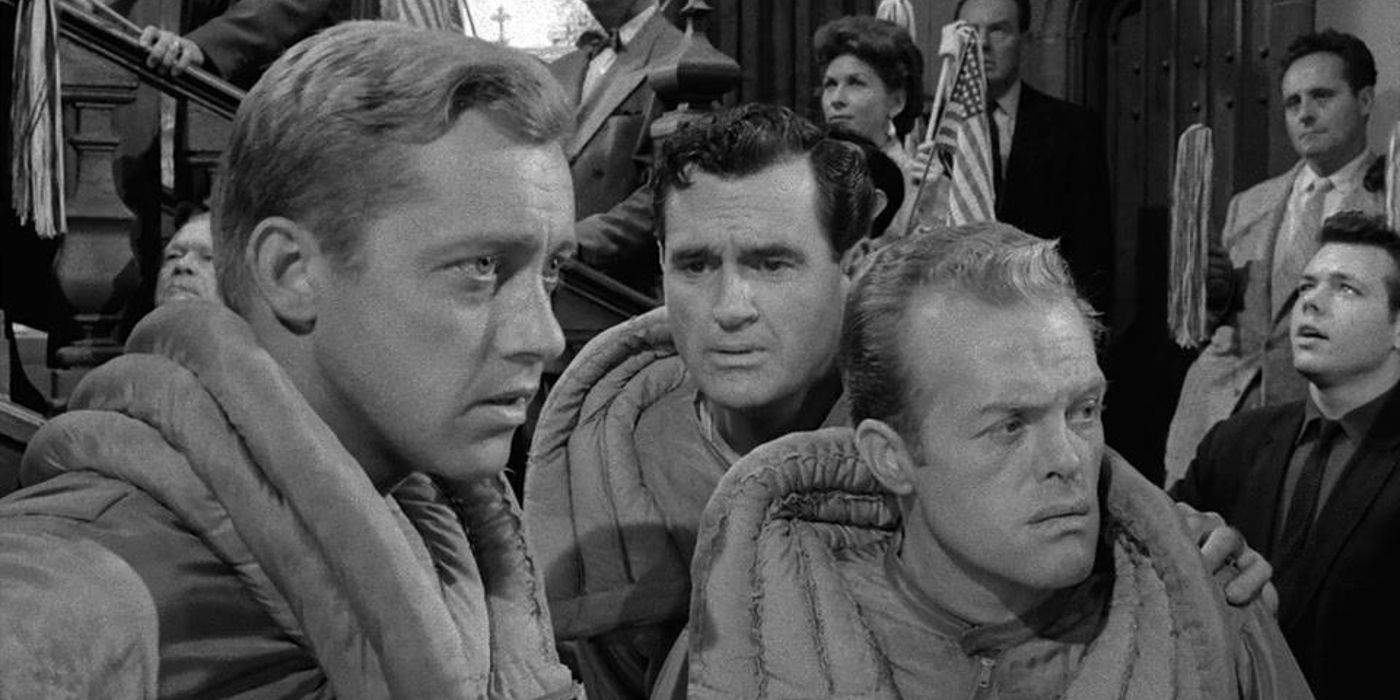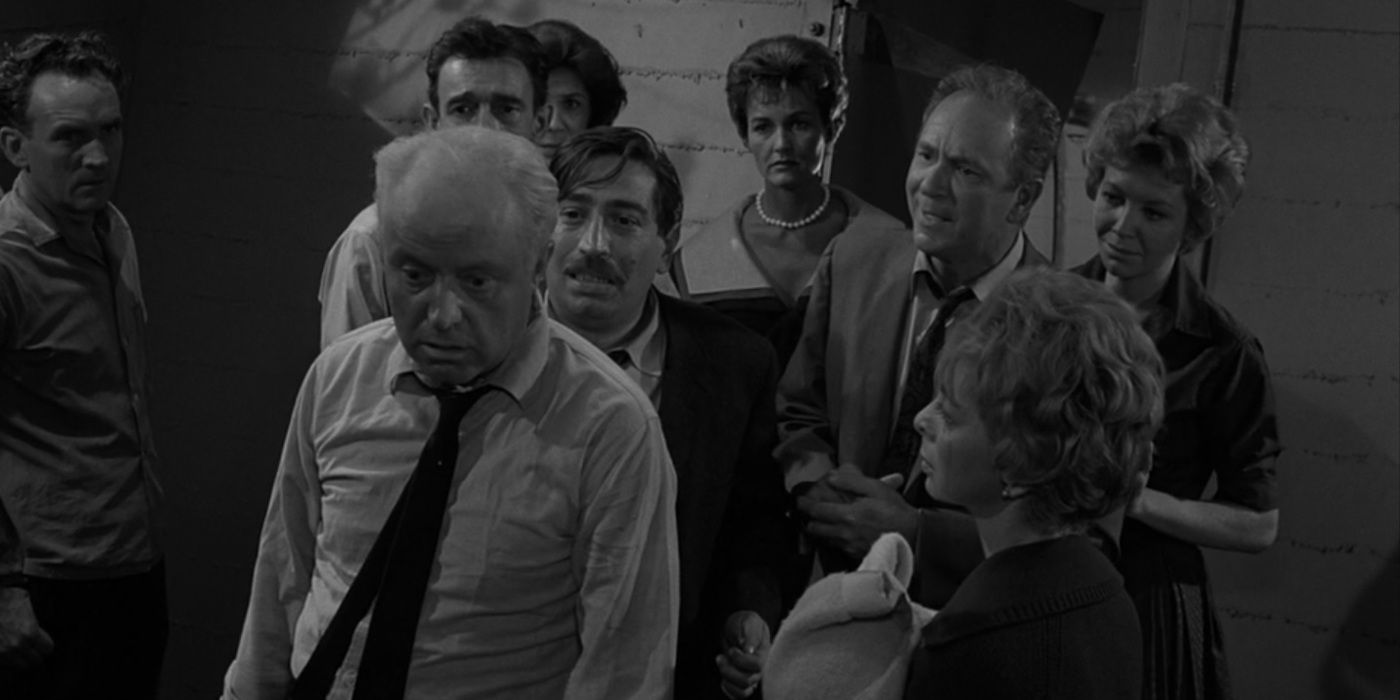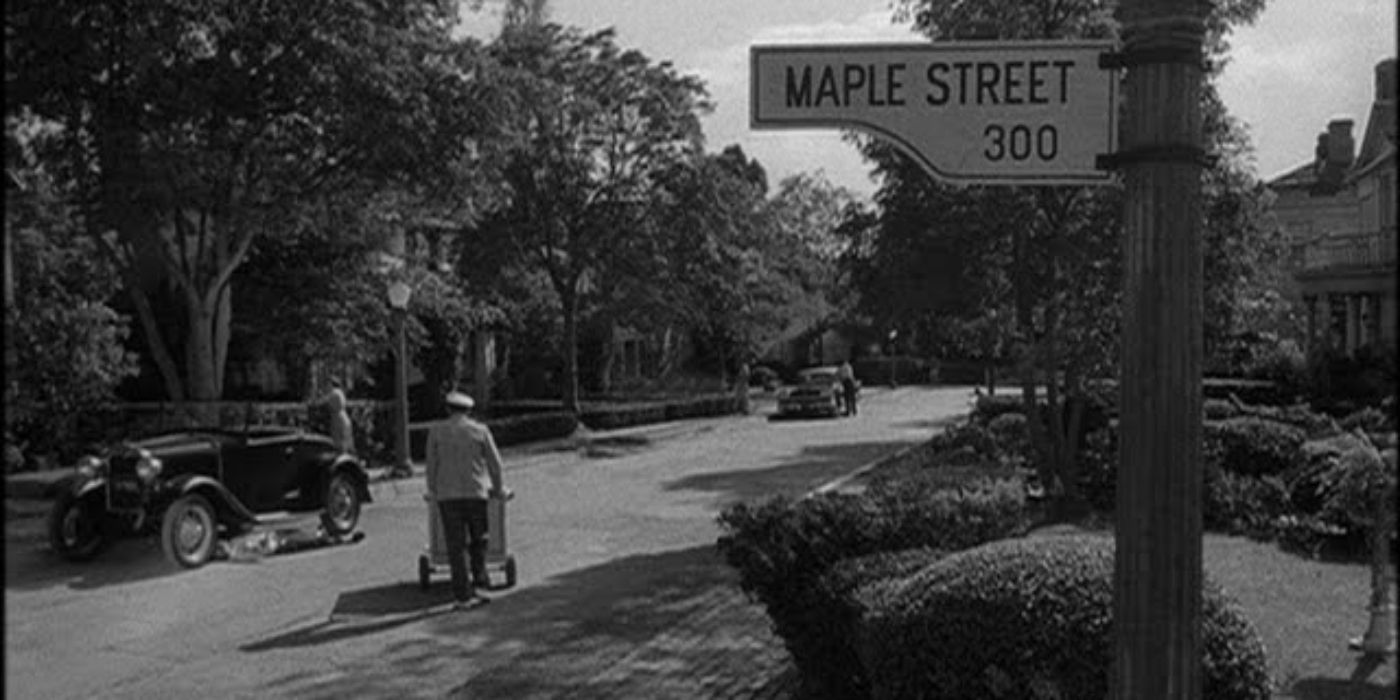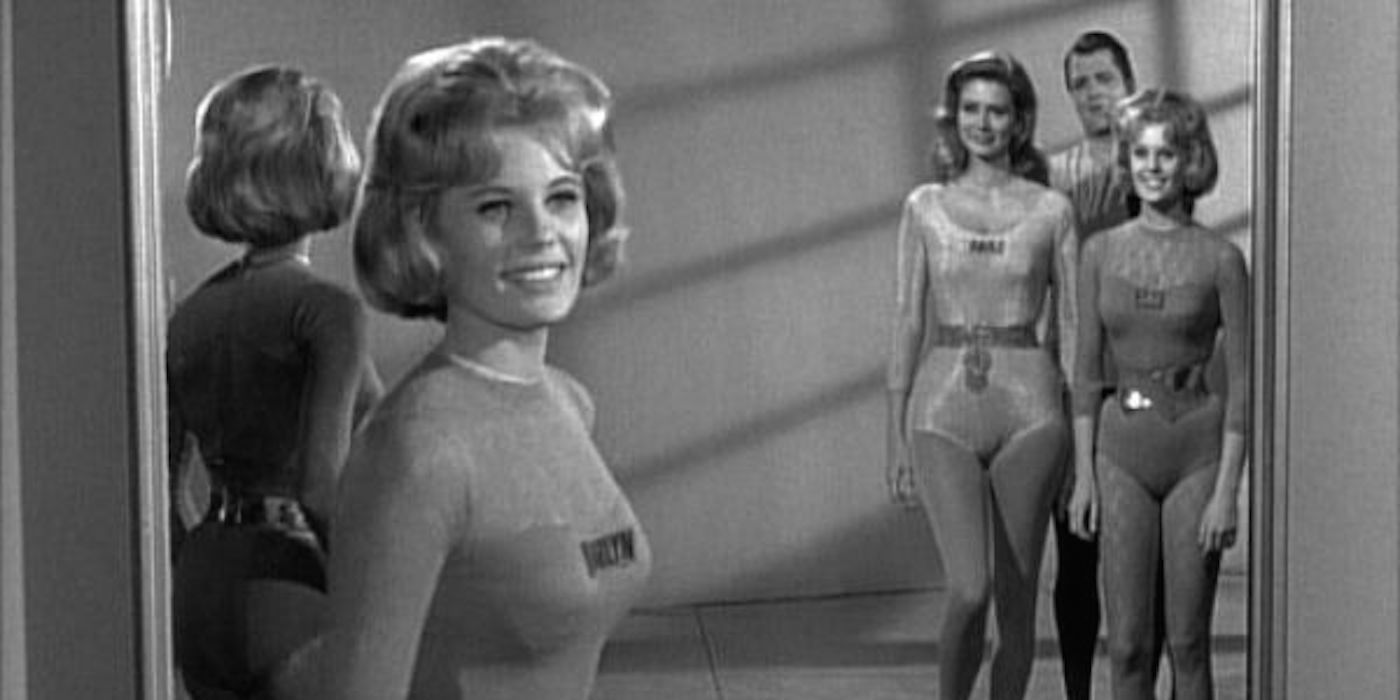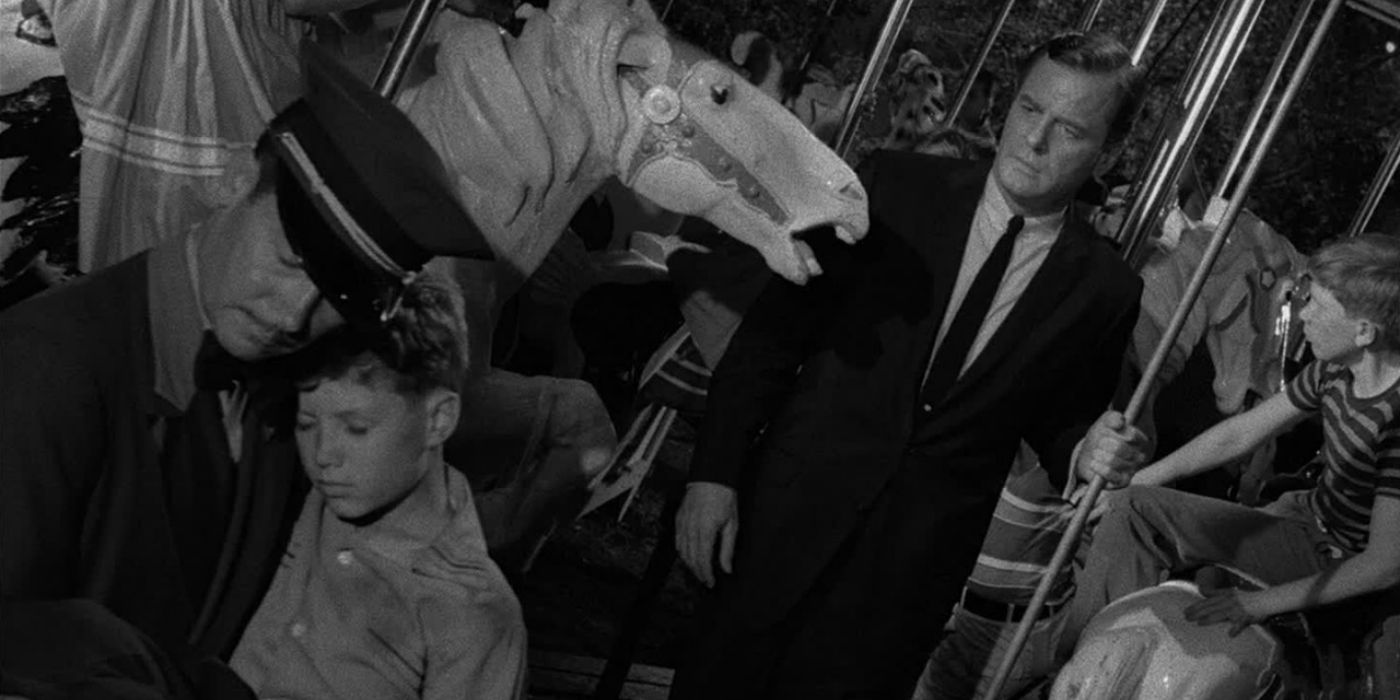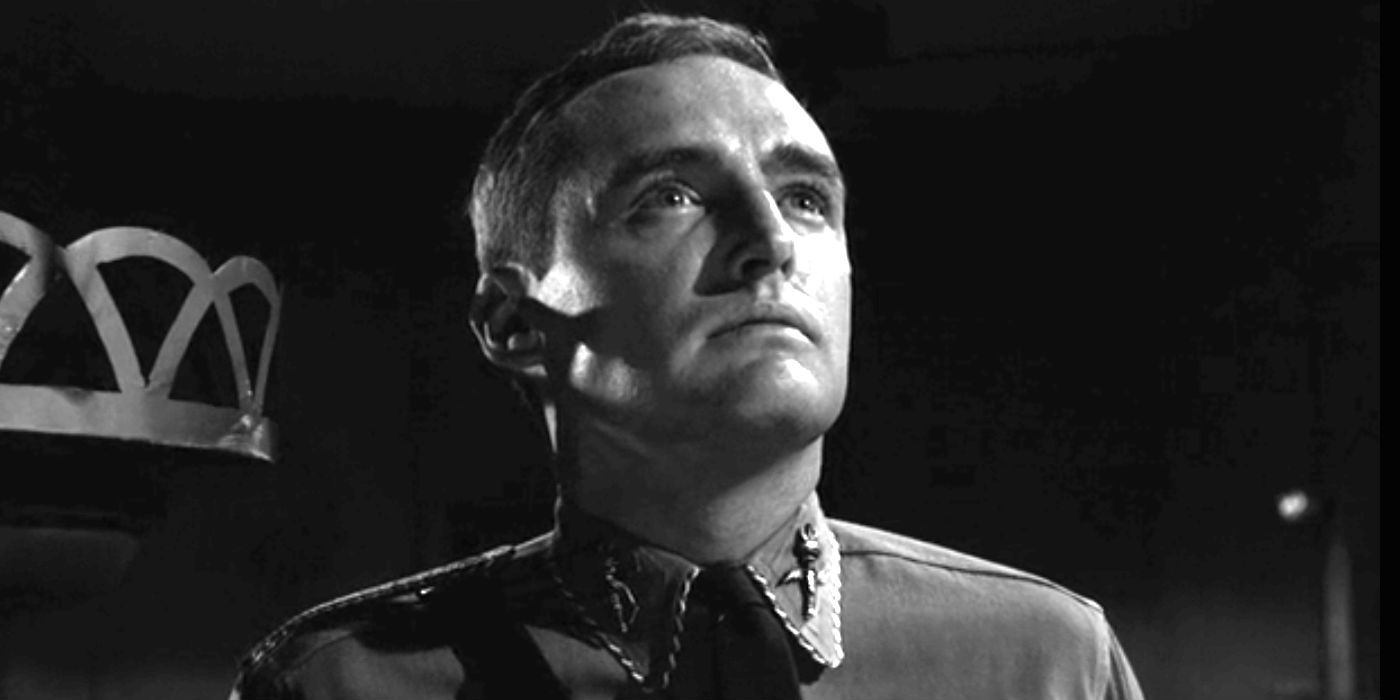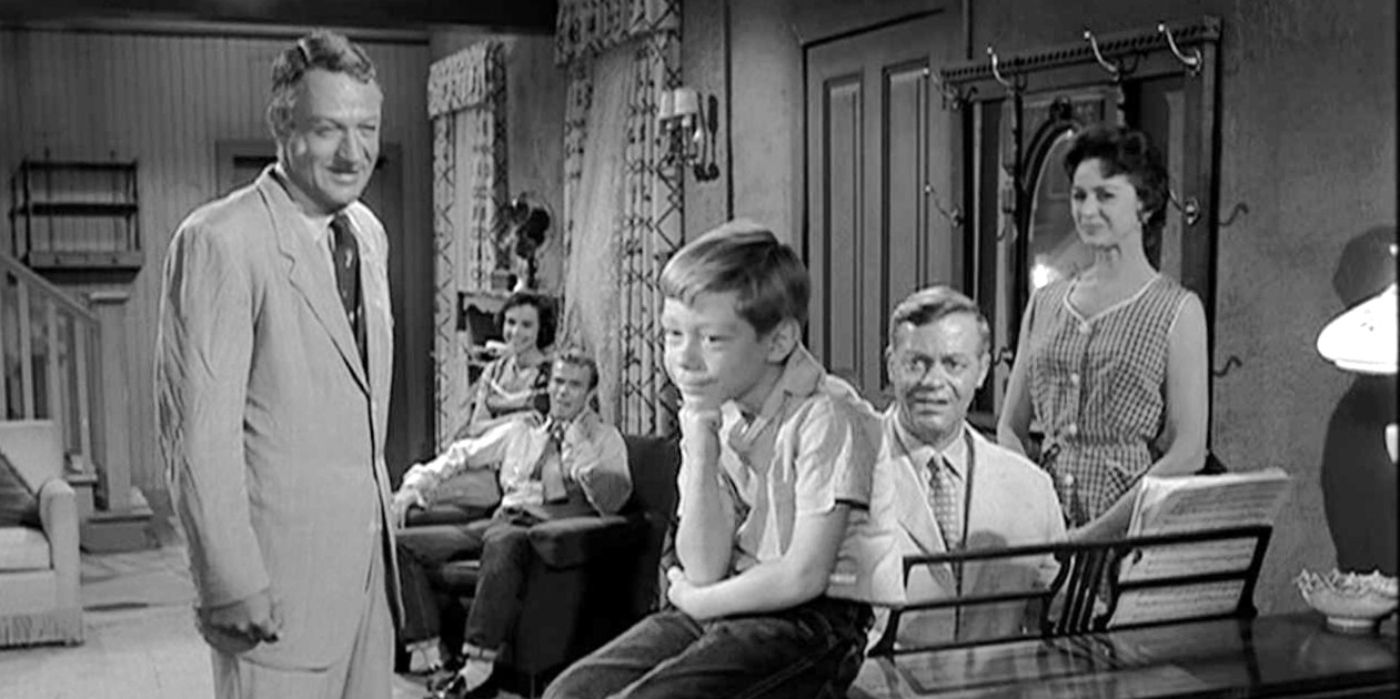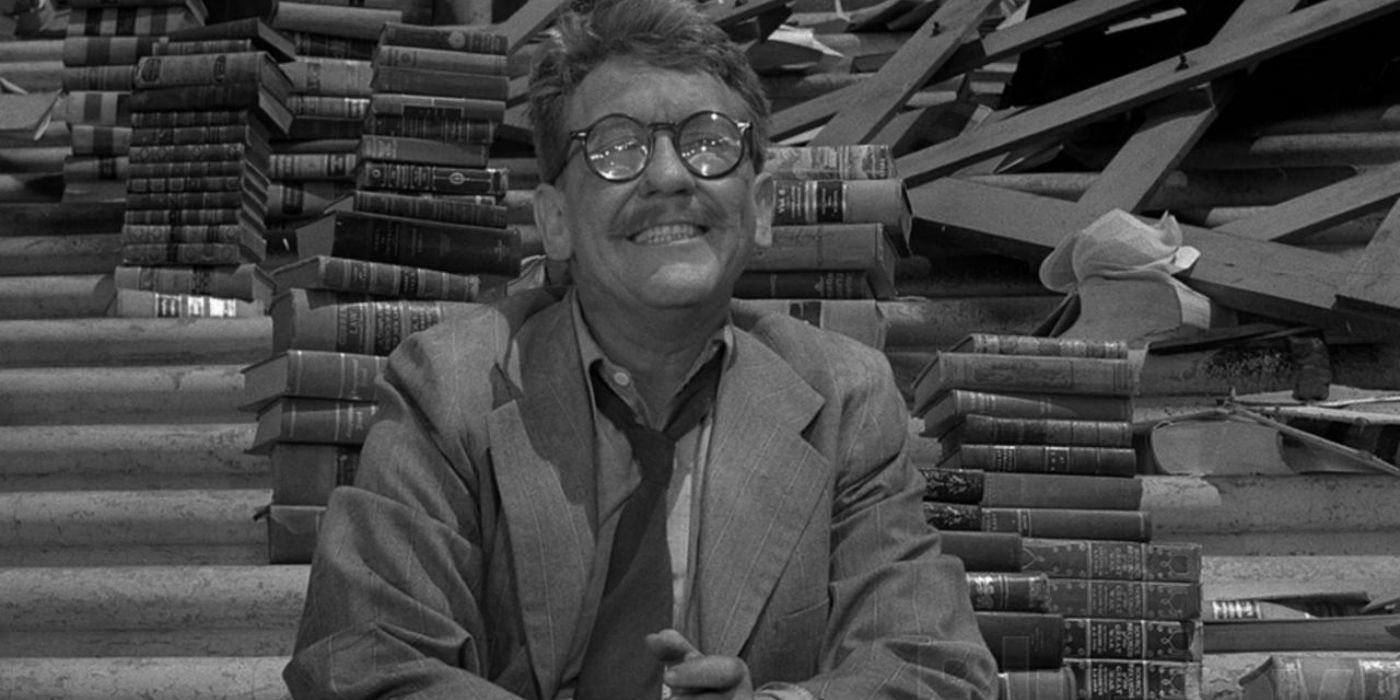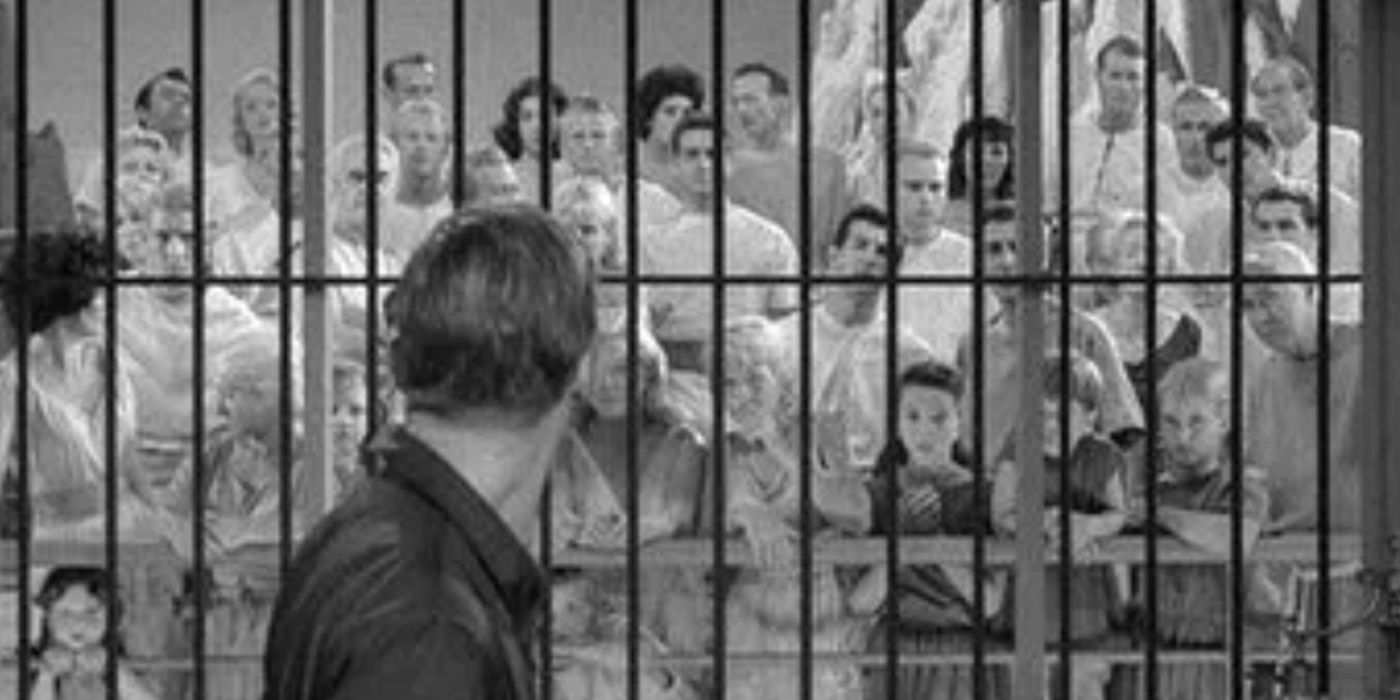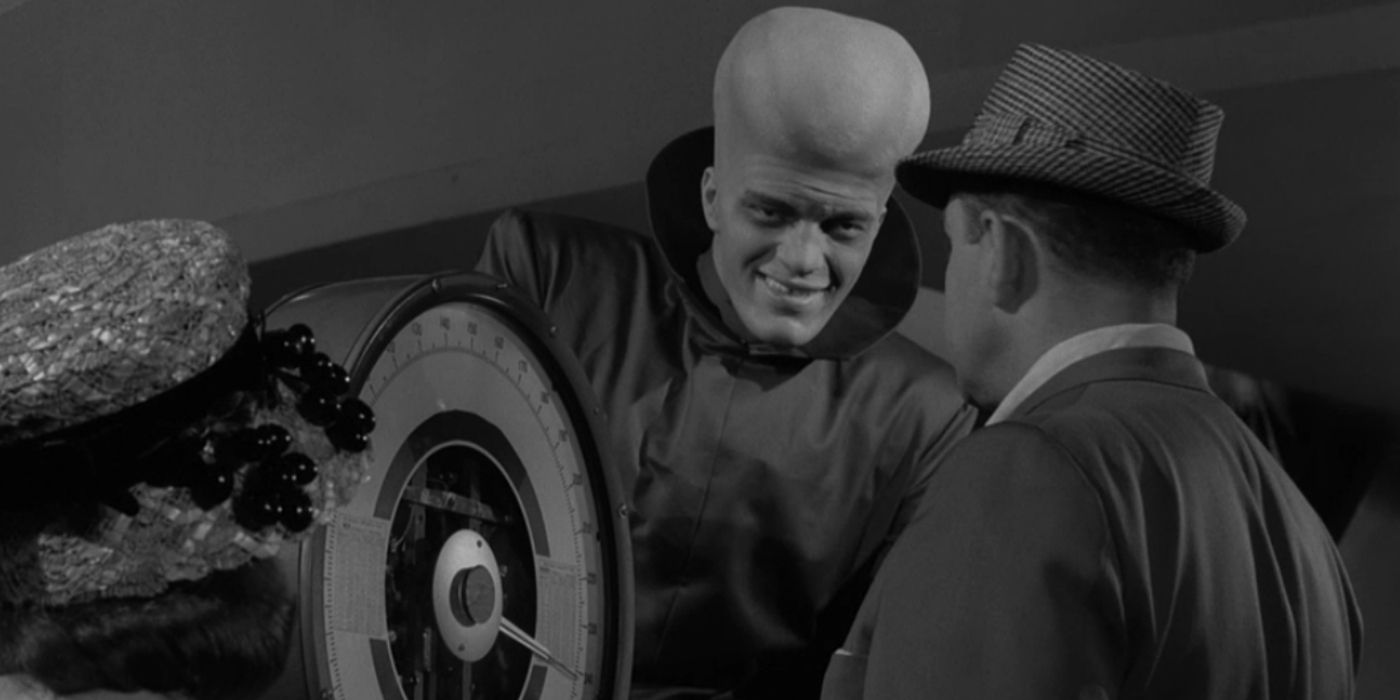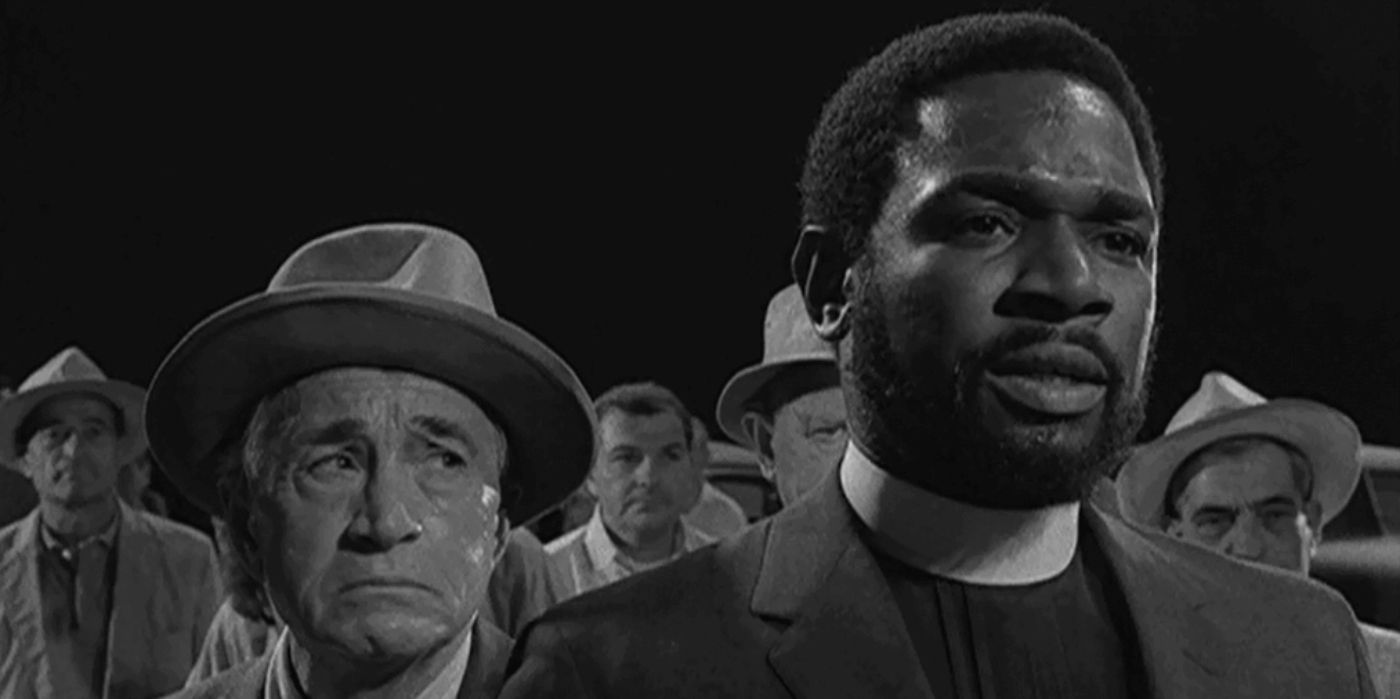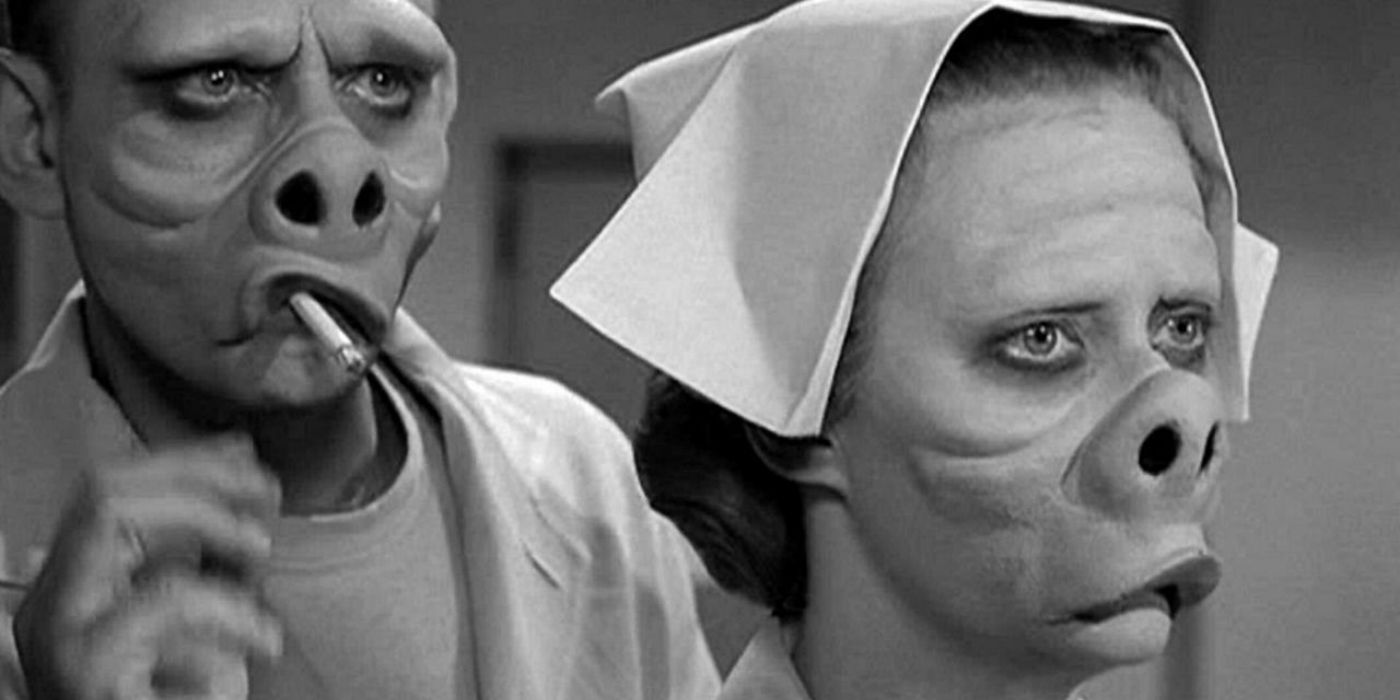Contains mention of suicide.
The Twilight Zone featured 156 episodes, but some were more iconic than others. The series premiered on October 2nd, 1959, and ran for five seasons until its conclusion on June 19th, 1964. Rod Serling’s series masked itself as a Science Fiction show, but beneath the supernatural plots were some crucial messages about life, society, and race. This is because Serling’s idea for a show about the 1955 Emmett Till lynching was turned down. Instead, he found a creative way to examine the injustices in the world through a sci-fi lens. This is evident throughout episodes like “I Am The Night–Color Me Black.”
However, The Twilight Zone made room for lighter topics too, with episodes exploring the possibility of extraterrestrial life and parallel realities. Both topics appeared various times throughout the show’s run, but Serling always found a unique way to revisit those plots. The Twilight Zone produced some memorable episodes, with some standing out so much that they were later recreated in several The Twilight Zone reboots. Whether Serling was trying to spread awareness of discrimination and hatred in the world or mess with viewers’ minds, here are 20 of the best episodes from the 1959 science fiction series.
20 Season 1, Episode 34, The After Hours
“The After Hours” is an eerie The Twilight Zone episode where Marsha White goes shopping in a department store and later learns she’s actually a mannequin who entered the human world for one month and forgot that she wasn’t a human too. The episode is an example of The Twilight Zone‘s uncanny nature and how most episodes end with some kind of unforeseen twist. The episode also raises questions about identity and how much one’s environment affects who they are. Though not as compelling as other The Twilight Zone episodes, “The After Hours” is still a memorable one from the show’s first season that even led to a remake in the 1985 The Twilight Zone series.
19 Season 1, Episode 36, A World Of His Own
“A World Of His Own” is one of the sillier The Twilight Zone episodes. However, a message can still be found beneath the surface of what seems like a very unrealistic scenario. Gregory West is a playwright with incredible power. Everything he writes comes to life, and if he wants to uncreate something, he must throw the tape from his dictation machine in the fire.
The episode is incredibly creative and compares life to a play where everyone is the writer of their life and can switch people and circumstances in and out at their own will. “A World Of His Own” perhaps isn’t as emotionally powerful as some other episodes. Nevertheless, it does shed light on how much control individuals have over their own lives.
18 Season 1, Episode 16, The Hitch-Hiker
“The Hitch-Hiker” has a very dark tone as it explores the fear of death and the main character’s desperation to get away from it. The episode follows Nan Adams, who continues to see the same hitchhiker on a road trip from New York City to Los Angeles. She believes he’s following her and trying to kill her, but at the end of the episode, she learns she has already died.
A shocking twist reveals the man has been waiting for her to accept her death so he can welcome her to the afterlife. At the end of the episode, Nan realizes the hitchhiker is actually a friendly man, suggesting death is not as scary as society makes it seem. It’s actually quite welcoming once accepted.
17 Season 1, Episode 21, Mirror Image
“Mirror Image” explores metaphysics and parallel realities, one of The Twilight Zone‘s favorite topics throughout its run. It follows Millicent Barnes at a bus station, where she sees a woman who looks identical to her. She insists it is another version of herself from a parallel reality that plans to replace her. The man she meets, Paul, doesn’t believe her until he sees his own double.
The episode even inspired Jordan Peele’s 2019 film Us, showcasing its lasting impact on pop culture. It may seem unrealistic, but The Twilight Zone‘s purpose was to open viewers’ minds to the possibility that everything they’ve deemed impossible actually does exist. “Mirror Image” is a great execution of this idea.
16 Season 2, Episode 15, The Invaders
“The Invaders” is one of The Twilight Zone‘s many dives into extraterrestrial life. The episode paints its main character as a human being harassed by little aliens, only to reveal at the end that she is a giant from another planet and the little aliens are human astronauts. The Twilight Zone episode explores one of many possibilities around what kind of life might be in other galaxies. It also plays with perspective, as the main character looks like the average woman without context. It’s only in comparison to humans that she appears different.
15 Season 5, Episode 25, The Masks
“The Masks” is a crucial The Twilight Zone episode, exploring greed and selfishness, seemingly qualifying as the evils of the world Serling often spoke about. In the episode, Jason Foster is on his deathbed as his greedy relatives await his death so they can inherit his wealth. He makes them wear Mardi Gras masks to celebrate the holiday, but when he passes away, and they finally take the masks off, they find their faces have transformed into the appearance of the masks.
With their new faces, they can no longer hide their true colors. The episode sends a powerful message about how evil on the inside can manifest on the outside. The horrifying faces at the end of the episode are quite memorable.
14 Season 5, Episode 6, Living Doll
From Child’s Play to Annabelle, haunted dolls are a popular topic in horror films. However, The Twilight Zone did the storyline decades earlier with “Living Doll.” The episode is as terrifying as the murderous doll films that came after it, and it explores the relationship between a child and her doll.
Dolls bring comfort to children amid uncertain circumstances, and in this case, the young character Christie is dealing with a stepfather who doesn’t like her. Her doll becomes her companion who looks out for her, even if that means sending threatening messages to her stepfather and ultimately causing him to suffer fatal injuries. The Twilight Zone episode is one of the scariest and sparked an obsession with haunted dolls that still hasn’t died out.
13 Season 5, Episode 3, Nightmare At 20,000 Feet
The Twilight Zone plays around a lot with the concept of one character witnessing something that no one else can see, which has the other characters questioning their well-being. This is the case in “Nightmare At 20,000 Feet.” The main character, Robert, sees a gremlin on the wing of the plane, but the monster hides whenever anyone other than Robert looks its way.
The gremlin seems to be toying with Robert, pushing him to tell others about him, knowing no one will believe Robert. It’s one of the funniest The Twilight Zone episodes and has been parodied many times, including in a Saturday Night Live skit and on an episode of The Simpsons. It also inspired an episode of the 2019 The Twilight Zone reboot series.
12 Season 1, Episode 20, Elegy
“Elegy” follows three astronauts on a planet called Happy Glades, a result of the 1985 nuclear war where rich people live out their fantasies after death. The astronauts are astonished that everyone on the planet is a statue until they meet the character Wickwire. Wickwire is actually a robot and ends up killing the astronauts, leaving them as statues too. The theme of the episode is that humanity will never find peace, and the only way for someone to be at peace is for them to die. The most potent aspect of the episode is at the end when Wickwire says, “while there are men, there can be no peace.“
11 Season 3, Episode 3, The Shelter
In “The Shelter,” Bill Stockton is enjoying his birthday party when an emergency announcement warns a nuclear war might be hitting the United States. Stockton takes his family to his shelter, allowing his guests to hide in the basement. However, the stress, uncertainty, and fear cause the guests to turn on each other, tearing each other down.
When it’s announced there is no nuclear war, and it was actually just harmless satellites headed toward Earth, the neighbors have done more harm to each other than an actual nuclear war could have done. The episode emphasizes how cruel humans can be to each other when under stressful circumstances and that their words and actions can do just as much harm as a war can.
10 Season 1, Episode 22, The Monsters Are Due On Maple Street
When odd occurrences begin on Maple Street, Les Goodman becomes the victim of an alien hunt, leading to the neighbors pointing fingers at everyone while the real Aliens watch from above. “The Monsters Are Due On Maple Street” has clear connections to McCarthyism, which was spreading a few years before the episode premiered. The episode is also heavily inspired by the Salem Witch Trials, a topic of conversation in the 50s because of the release of The Crucible.
The episode mocks how easy it is to use fear against society, creating paranoia among citizens. The episode is so important because of how many times the witch-hunt dynamic has played out when people are in fear. “The Monsters Are Due On Maple Street” warns viewers not to make the same mistakes in the future but predicts those mistakes might be inevitable.
9 Season 5, Episode 17, Number 12 Looks Just Like You
“Number 12 Looks Just Like You” explores conformity and seemingly predicts the future when it comes to society’s obsession with plastic surgery and looking perfect. Marilyn Cuberle doesn’t want to follow the masses by getting her “transformation” surgery at 19 years old. Part of her character is her father was a radical who taught her to read banned books growing up, and he eventually took his own life because he lost his identity after his own transformation.
The episode explores society’s obsession with perfection. More than this, however, it examines its negative views of those who are different and don’t want to be like everyone else. Not only does it dive into beauty standards, which is just as important today as it was when the episode aired in 1964, but it explores the horrors of a society where everyone is forced to be the same and can’t express their authenticity and uniqueness.
8 Season 1, Episode 5, Walking Distance
“Walking Distance” is a nostalgic episode about the importance of appreciating being young while youth is still available. Martin Sloan is a New York advertising executive who ends up back in his hometown, where nothing has changed. He meets his younger self and reunites with his parents. However, he later learns from his father that growing up and looking toward the future instead of getting stuck in the past is just as important as appreciating the present moment. The message can also be applied to the importance of society looking toward the future instead of getting stuck in the past or resorting to past ways that are no longer beneficial.
7 Season 4, Episode 4, He’s Alive
“He’s Alive” is one of The Twilight Zone‘s bravest episodes. The story dives into antisemitism and features the ghost of Adolf Hitler, encouraging its main character to continue his message of hatred. While the title is a reference to Hitler being alive in the episode, it’s also suggesting that in the real world, the hatred Hitler spread is still alive even though he’s not.
The episode’s main character Peter Vollmer is the leader of a Neo-Nazi group, who follows Hitler’s orders, even when he demands Peter kill his Jewish friend. It’s unsettling to see the dictator on the screen, but that’s the point of the episode. It explores an uncomfortable topic to convey that the past repeats itself when society allows the same cruelness to exist even after the message’s originator has died.
6 Season 3, Episode 8, It’s A Good Life
“It’s a Good Life” explores how the monsters of the world are often society’s very own creations. In the episode, a six-year-old boy named Anthony is described as a monster who holds tremendous power over the adults around him. The adults in the episode are afraid to upset Anthony because when he gets mad, his powers become harmful.
Instead, they continuously praise him as he hurts others and creates chaos in the neighborhood. On the surface, it’s funny to see such a young boy have so much power with his mind. However, the episode also provides a look into how dangerous people are created and what happens when others are afraid too afraid to stand up to the evils of the world.
5 Season 1, Episode 8, Time Enough At Last
Be careful what you wish for might be a cliché, but it rings true in “Time Enough At Last,” when bank teller Henry Bemis wants everyone to leave him alone so he can read his books. He gets his desire when a bomb destroys the world around him, allowing him a peaceful place to read. Unfortunately, being alone in the world isn’t what he thought it would be, as he accidentally breaks his glasses, destroying the possibility of him ever reading again.
Henry is left wishing he had someone who could help him now, but he has no one but himself. He may have all the time in the world now, but without others around to help him, he has nothing. The message is that Henry should have appreciated the people around him when they were there, even if they were getting on his nerves.
4 Season 1, Episode 25, People Are Alike All Over
“People Are Alike All Over” reveals its message in its title. However, the episode also explores the darker meaning of the phrase. An astronaut named Conrad finds himself locked in a cage as an exhibit in the Alien Zoo on Mars. His fellow astronaut Marcusson, who passes away early into the episode, tells him that people are alike all over, and that’s why he shouldn’t fear the aliens.
He only believes him when he meets the aliens and sees how much they resemble humans, and learns how kind they are. However, when they trick him and then use him for their zoo, he exclaims, “Marcusson! Marcusson, you were right! You were right. People are alike…. people are alike everywhere.” The episode points out that humans are often afraid of others they think are dangerous, not realizing how dangerous humans are in how they treat others.
3 Season 3, Episode 24, To Serve Man
The episode title “To Serve Man” is based on the book a group of Aliens call The Kanamits bring with them when they arrive on Earth. The Aliens’ advanced technology offers a lot of help to the world as it ends world hunger and energy shortages. The Aliens inspire humans to join them on their planet, but the character Patty soon learns that To Serve A Man is actually a cookbook, and when Michael Chambers goes to their planet, they plan to eat him. The episode is great because it once again showcases that humans don’t have as much power as they think they do. In “To Serve A Man,” as in many The Twilight Zone episodes, humanity’s greed leads to its demise.
2 Season 5, Episode 26, I Am The Night–Color Me Black
Airing “I Am the Night–Color Me Black” in 1964 was a risk. Serling was already denied his Emmett Till series, and this episode seems to be the closest to the series Serling originally set out to make. The character Jagger is set to be hung in front of the town after being accused of killing a bigot, which he claims was self-defense. The plot is as relevant today as it was when the episode premiered almost 60 years ago. The sheriff isn’t sure Jagger is guilty and feels guilt over allowing him to be hung when the evidence doesn’t line up with the story.
However, because the sheriff wants to be reelected, he says nothing. As the execution continues, the sun never rises over the town despite it being 9:00 am. While Jagger is portrayed by a white actor, a black actor portrays a clergyman. He’s the one to inform everyone that the sky is dark because of all the hatred in the world, including the execution. The closing narration addresses the many hatreds, one of them being JFK’s assassination, which happened only a year before the episode aired. As such, “I Am the Night–Color Me Black” is one of The Twilight Zone‘s most significant episodes.
1 Season 2, Episode 6, Eye Of The Beholder
The Twilight Zone has had a massive impact on pop culture, but one of the most memorable episodes, likely due to the horrifying pig-faced characters, was “Eye of the Beholder.” The episode is so fascinating because the main character Janet Tyler is a stereotypically beautiful woman who has tried all different surgeries, believing she is not beautiful and needs to look like everyone else. Consequently, “Eye of the Beholder” holds up a startling mirror to society’s own hypocrisies and standards.
The episode depicts a world where everyone has pig-like noses, drooping faces, and curved mouths. The characters are the epitome of what typical society would call ugly. However, in The Twilight Zone, Janet dreams of being as beautiful as the pig-faced characters. The episode is so iconic because it brought a very common phrase to life, proving just how true the phrase is.

